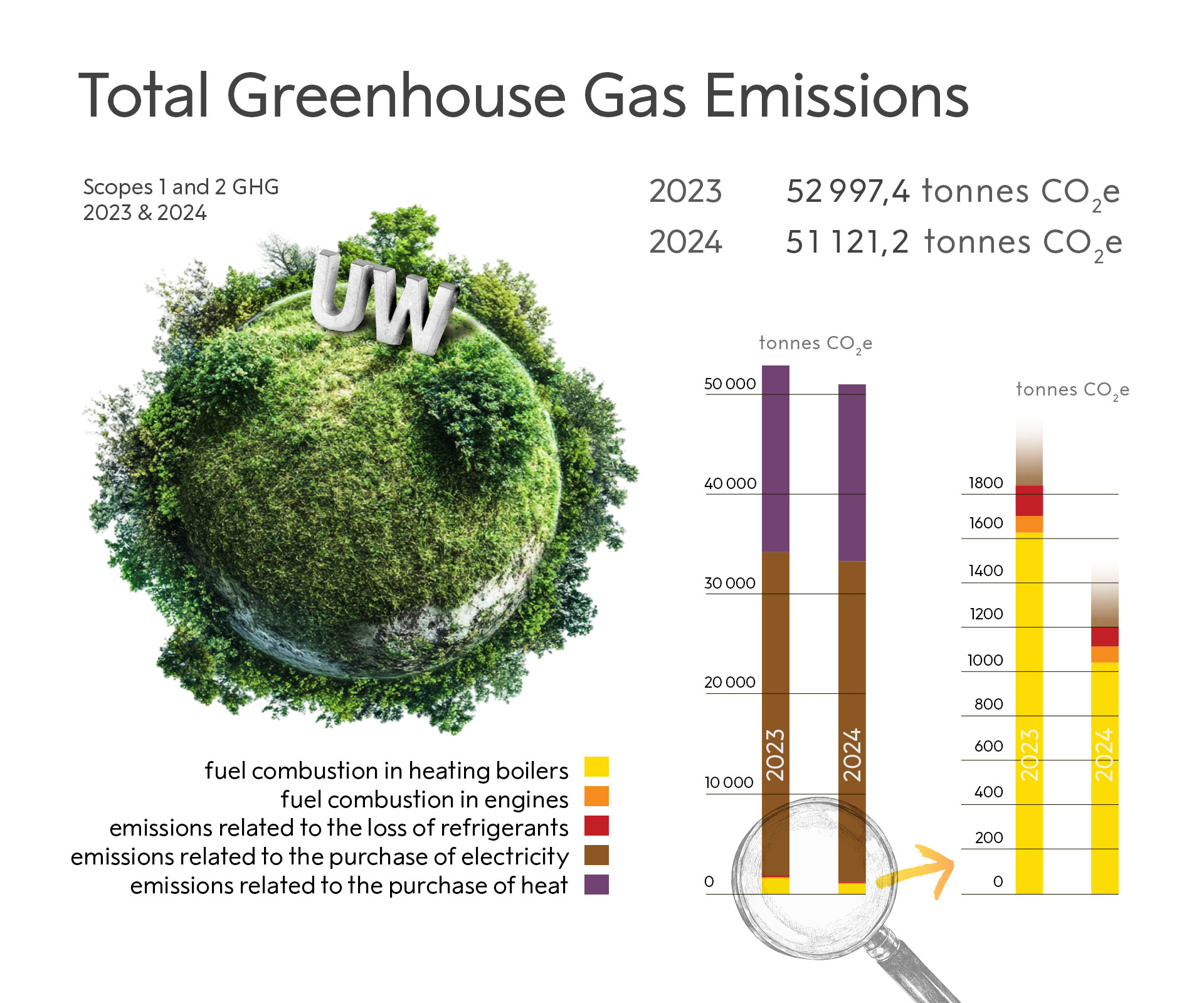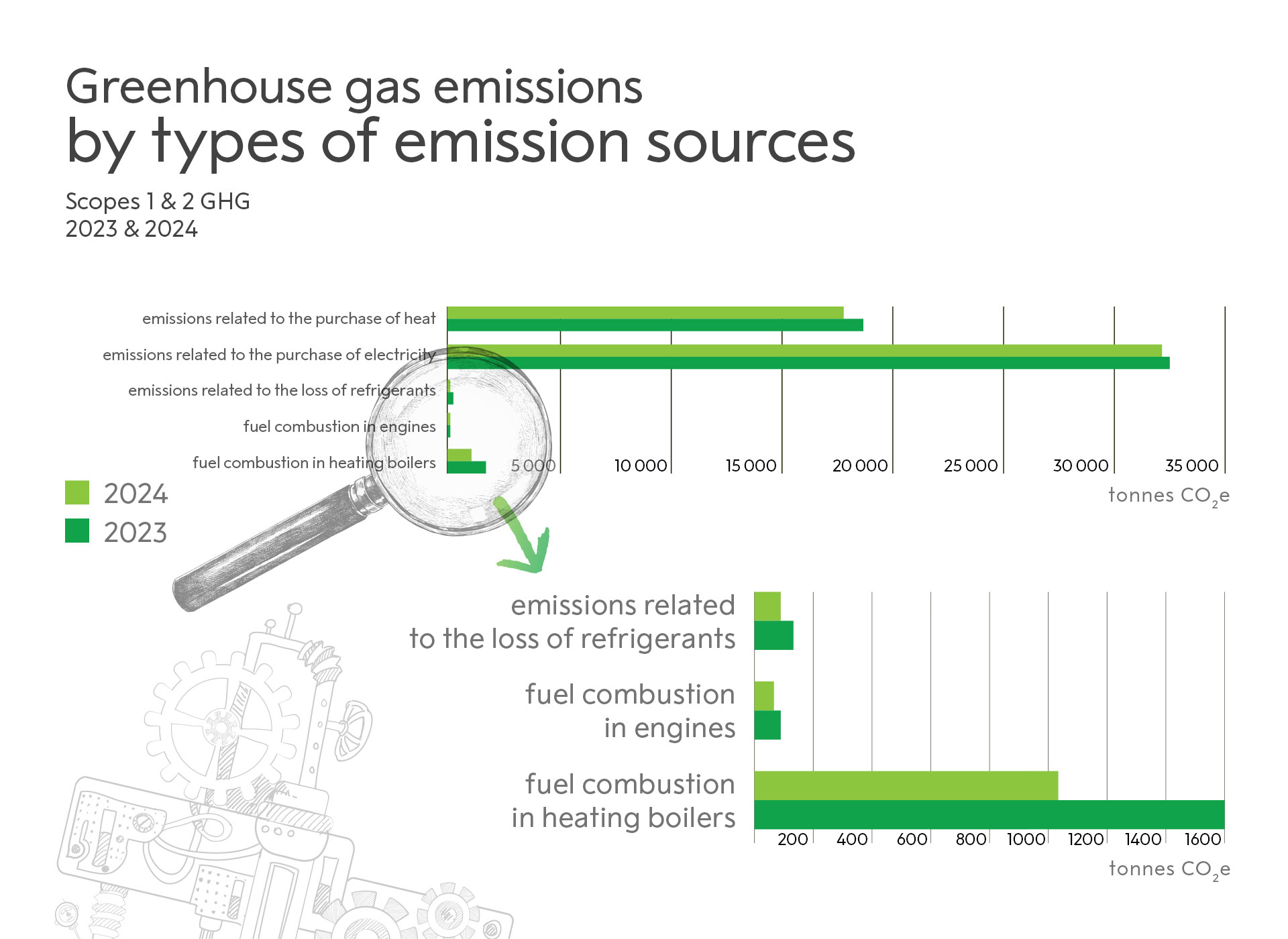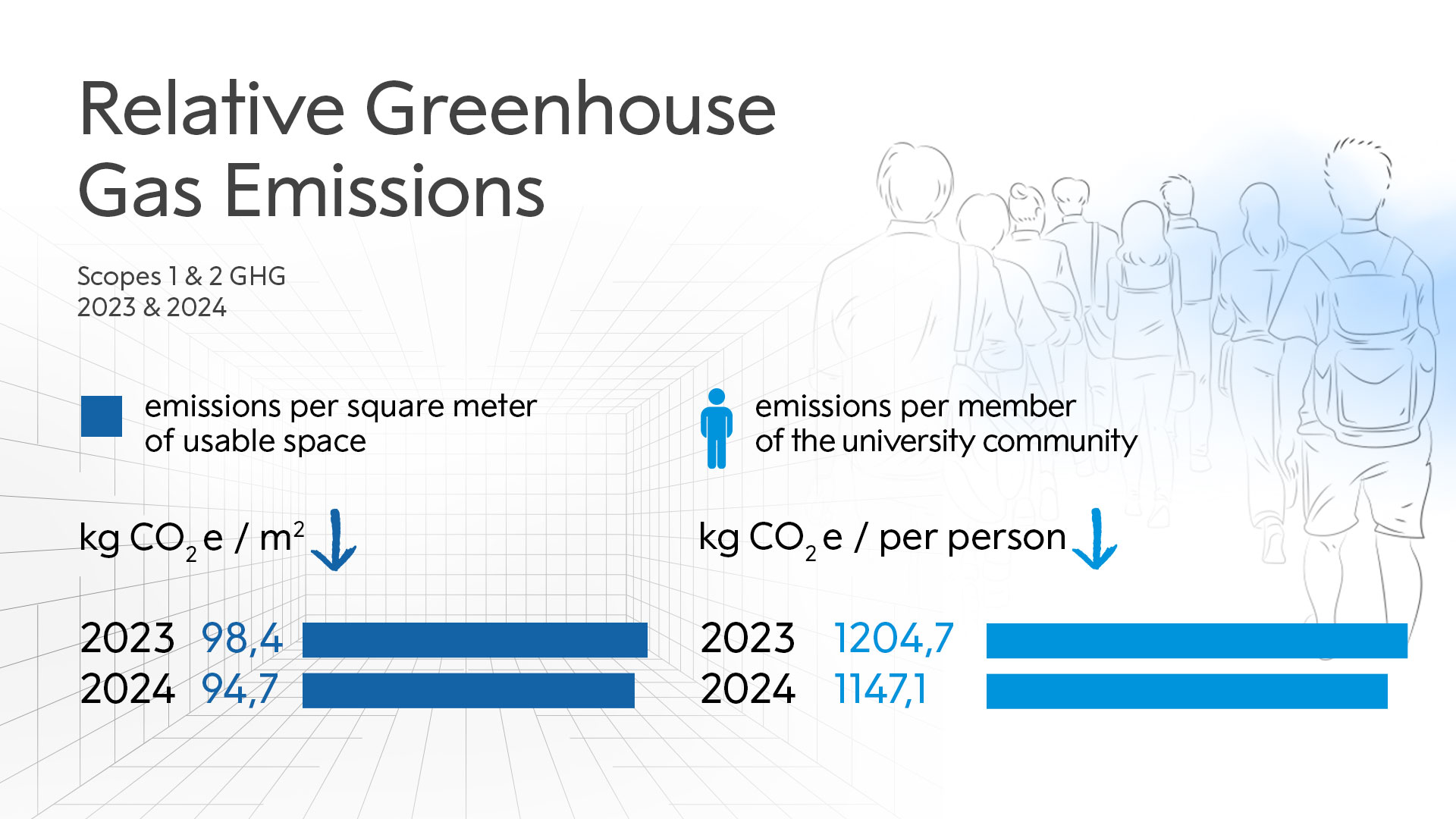Carbon Footprint
 Why Measuring the University’s Carbon Footprint Matters.
Why Measuring the University’s Carbon Footprint Matters.
“Our strive for a sustainable approach in university operations, the promotion of social responsibility or climate protection issues within the University of Warsaw should not only manifest itself in the disseminated academic knowledge and in university research, but also become permanently ingrained in our internal routines and daily activities. Only in this way, implementing the provisions of the University Agenda for climate and sustainable development, the UW will be able to contribute more strongly to the creation of a dynamic, active and learning organisation, which will provide a sustainable work and education environment for our entire community in the years to come.”
(University of Warsaw Strategy 2023–2032)
In the face of the growing climate crisis, organizations, businesses and academic institutions alike should be aware of their environmental impact. The University of Warsaw is not only a hub of science and education – it is also a large-scale organization that consumes energy and water, generates waste, and influences its surroundings. One of our strategic goals is to evolve into a more adaptive, self-improving institution – primarily through simplifying and improving the quality of organizational, financial and investment processes, as well as by standardising and enhancing the management of university space and infrastructure. Regularly measuring our organization’s carbon footprint allows us not only to monitor emissions, but also to manage them effectively – and, most importantly, to set realistic reduction targets in line with our commitment under the United Nations’ Race to Zero initiative.
The Carbon Footprint of the University of Warsaw
 The University of Warsaw has assessed its carbon footprint using the internationally recognized GHG Protocol, covering both Scope 1 and Scope 2 emissions. These include, respectively, direct emissions (such as those from fuel combustion or refrigerant losses) and indirect emissions resulting from the purchase of electricity and heat. The analysis covered the years 2023 and 2024.
The University of Warsaw has assessed its carbon footprint using the internationally recognized GHG Protocol, covering both Scope 1 and Scope 2 emissions. These include, respectively, direct emissions (such as those from fuel combustion or refrigerant losses) and indirect emissions resulting from the purchase of electricity and heat. The analysis covered the years 2023 and 2024.
Scope 1 emissions include greenhouse gases generated by the use of boilers, engines, and refrigerants. Data was collected from all UW facilities, including those located outside Warsaw. The calculations were based on actual fuel consumption and refrigerant use. Emission factors published by The National Centre for Emissions Management – KOBiZE (for fuel combustion in boilers and engines) and GWP values (Global Warming Potential) provided by the Intergovernmental Panel on Climate Change (IPCC) were applied. It’s also worth noting that the University reports these Scope 1 emissions annually to the relevant regional environmental authorities.
Scope 2 emissions relate to energy purchased by the University. The data includes electricity consumption across all UW units – both in Warsaw and in other locations. Calculations were based on emission factors published by KOBiZE. As for heating, the data concerned only facilities located in Warsaw. Emissions from heat generation at facilities outside Warsaw were accounted for either under Scope 1 or Scope 2, depending on the energy source – specifically, if electricity was used to produce the heat, the related emissions were included accordingly. Emission factors for heat were based on data published by Energy Regulatory Office (URE).
RESULTS
Total Greenhouse Gas Emissions
In 2023, the total greenhouse gas (GHG) emissions of the University of Warsaw (Scopes 1 and 2) amounted to 52 997.4 tonnes of CO₂ equivalent (t CO₂e). In the following year, 2024, emissions decreased by 3.5%, reaching 51 121,2 t CO₂e. The largest share of total emissions came from indirect sources, primarily related to the purchase of electricity and heat.

Chart 1. Greenhouse gas emissions (Scope 1 and 2 GHG) in 2023 and 2024.

Chart 2. Greenhouse gas emissions (scope 1 and 2 GHG) by types of emission sources in 2023 and 2024
Relative Greenhouse Gas Emissions
To better understand the scale of its environmental impact, the University of Warsaw also analysed its relative carbon footprint – that is, emissions per square meter of usable space and per member of the university community.
Taking into account the net usable floor area of buildings and premises owned, co-owned, rented, or leased by the University, the relative carbon footprint amounted to: 98.4 kg CO₂e / m² in 2023 and 94.7 kgCO₂e / m² in 2024.
When calculated per total number of students and doctoral students (with each individual counted only once), as well as the number of employees (measured in full-time equivalents), the University of Warsaw’s carbon footprint amounted to 1 204,7 kg CO₂e per person in 2023 and 1 147,1 kg CO₂e per person in 2024.

Chart 3. Greenhouse gas emissions per square meter of the University of Warsaw’s net usable floor area and per person, including students, doctoral students and staff, in 2023 and 2024 (Scope 1 and 2 GHG emissions).
